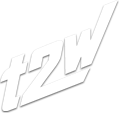Nowler
Experienced member
- Messages
- 1,551
- Likes
- 223
Well the release went against me a bit.
I put a fib on the high/low on the 1hr chart and moved my stop loss back behind the 38% level.
As you can see, the price spiked through the 38% level but stopped just short of my stop loss.
If it's going to hit it then it's going to do it soon.
EDIT:
I was very tempted to sell into it again.
If I had of, it would have been with the same amount as the initial trade.
Lets see how this fairs out...
I put a fib on the high/low on the 1hr chart and moved my stop loss back behind the 38% level.
As you can see, the price spiked through the 38% level but stopped just short of my stop loss.
If it's going to hit it then it's going to do it soon.
EDIT:
I was very tempted to sell into it again.
If I had of, it would have been with the same amount as the initial trade.
Lets see how this fairs out...
Attachments
Last edited:






